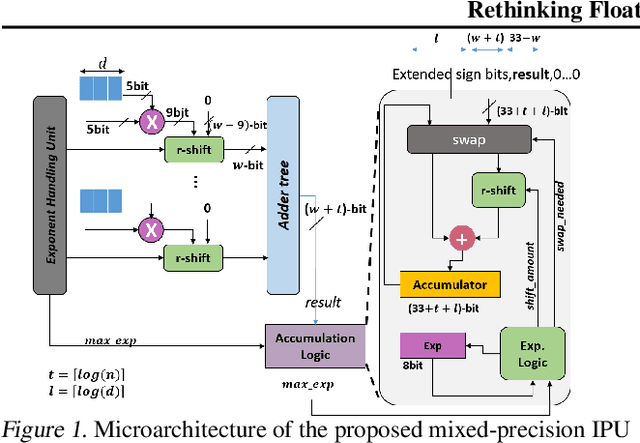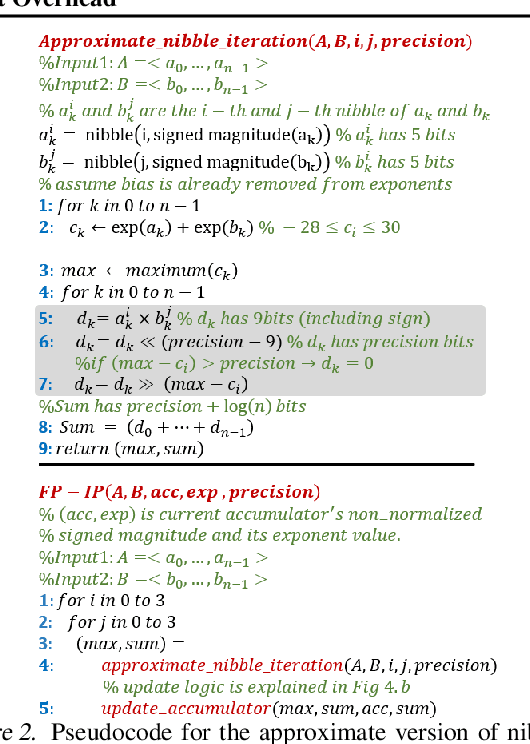Rethinking Floating Point Overheads for Mixed Precision DNN Accelerators
Paper and Code
Jan 27, 2021



In this paper, we propose a mixed-precision convolution unit architecture which supports different integer and floating point (FP) precisions. The proposed architecture is based on low-bit inner product units and realizes higher precision based on temporal decomposition. We illustrate how to integrate FP computations on integer-based architecture and evaluate overheads incurred by FP arithmetic support. We argue that alignment and addition overhead for FP inner product can be significant since the maximum exponent difference could be up to 58 bits, which results into a large alignment logic. To address this issue, we illustrate empirically that no more than 26-bitproduct bits are required and up to 8-bit of alignment is sufficient in most inference cases. We present novel optimizations based on the above observations to reduce the FP arithmetic hardware overheads. Our empirical results, based on simulation and hardware implementation, show significant reduction in FP16 overhead. Over typical mixed precision implementation, the proposed architecture achieves area improvements of up to 25% in TFLOPS/mm2and up to 46% in TOPS/mm2with power efficiency improvements of up to 40% in TFLOPS/Wand up to 63% in TOPS/W.
 Add to Chrome
Add to Chrome Add to Firefox
Add to Firefox Add to Edge
Add to Edge